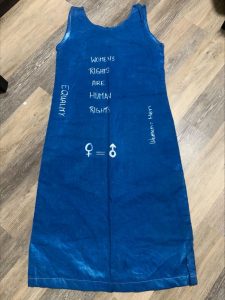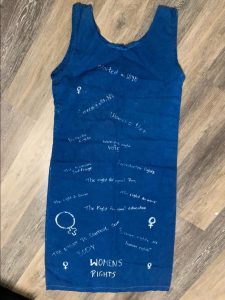1 Representing the Seneca Falls Convention
Nikki Singh
 In our discussion of “Visual Culture, and the French Revolution” we examined the Royal Academy System and how women and men were not treated equally. Further, women were much less likely to be accepted to the Royal Academy System. For example, there were two women who were accepted to the academy in 1768 (Mary Moser and Angelica Kauffmann), it wasn’t until 1922 when another female had been elected to the British Royal Academy System. This demonstrates how women and men were not seen as equals and did not receive equal opportunity in the art world, specifically in the Royal Academy System, as demonstrated through the acceptance rates. This representation of inequality was significant when examining the process to become a professional artist. Since women were less likely to be accepted into the Royal Academy System, they were also much less likely to become successful professional artists, as it was crucial for individuals to be accepted into the Royal Academy System to become professional artists. Therefore, women were at a disadvantage simply because of their gender when viewing the likelihood of women being successful and professional artists.
In our discussion of “Visual Culture, and the French Revolution” we examined the Royal Academy System and how women and men were not treated equally. Further, women were much less likely to be accepted to the Royal Academy System. For example, there were two women who were accepted to the academy in 1768 (Mary Moser and Angelica Kauffmann), it wasn’t until 1922 when another female had been elected to the British Royal Academy System. This demonstrates how women and men were not seen as equals and did not receive equal opportunity in the art world, specifically in the Royal Academy System, as demonstrated through the acceptance rates. This representation of inequality was significant when examining the process to become a professional artist. Since women were less likely to be accepted into the Royal Academy System, they were also much less likely to become successful professional artists, as it was crucial for individuals to be accepted into the Royal Academy System to become professional artists. Therefore, women were at a disadvantage simply because of their gender when viewing the likelihood of women being successful and professional artists.
I chose to create a cyanotype dress to express a social movement titled Seneca Falls Convention that took place in 1848. In this movement, individuals gathered to march and fight for equality amongst men and women. This was a women’s suffrage movement in which individuals marched for rights and privileges that women of that time were denied. Further, I was inspired to discuss the Seneca Falls Convention using the cyanotype process as both occurrences took place around the same time, as cyanotypes were invented in 1842 and the Seneca Falls Convention took place in 1848. This coincidence inspired me to express the Seneca Falls Convention through manipulation of the cyanotype materials.
 The dress I made is meant to demonstrate how gender should not determine an individual’s opportunity to succeed in society. I chose to specifically make a dress because it symbolizes gender stereotypes, which is a main concern as to why women and men were treated differently in the Royal Academy System. Gender stereotypes allowed men to establish what women were and were not capable of, this also allowed men to create limitations for women when in reality men had no right to do so rather, women should have been able to create their own limitations and strive to achieve anything they set their minds to.
The dress I made is meant to demonstrate how gender should not determine an individual’s opportunity to succeed in society. I chose to specifically make a dress because it symbolizes gender stereotypes, which is a main concern as to why women and men were treated differently in the Royal Academy System. Gender stereotypes allowed men to establish what women were and were not capable of, this also allowed men to create limitations for women when in reality men had no right to do so rather, women should have been able to create their own limitations and strive to achieve anything they set their minds to.

